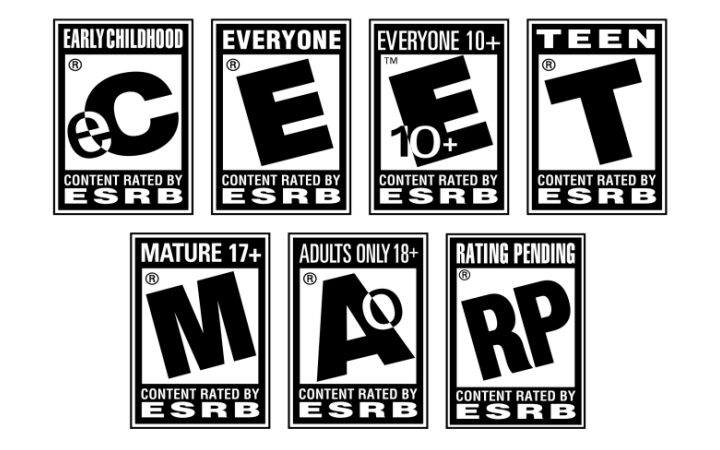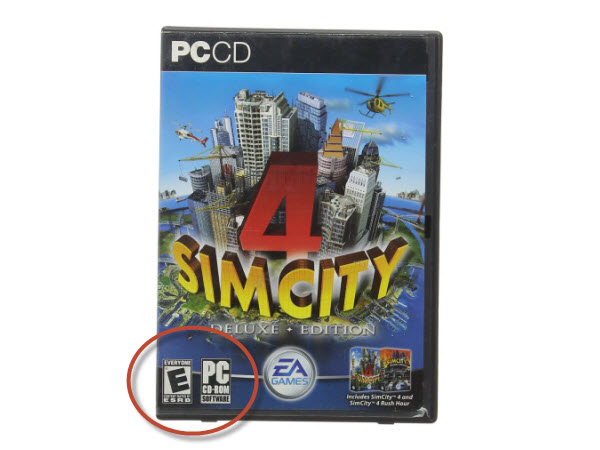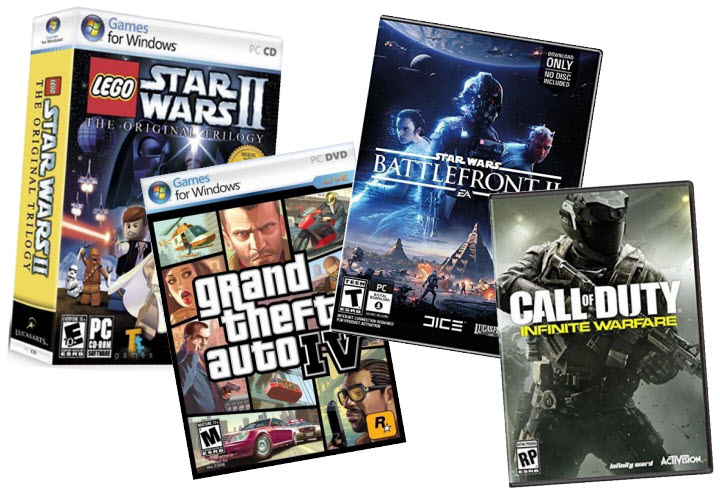
Your child wants a rather tame-looking new video game, but its ESRB rating says "E 10+," and she is only seven. Your teenager has his eye on a title that's rated "M for mature." Can he handle the content? Ratings from the Entertainment Software Rating Board (ESRB) appear on the packaging or marketing materials for virtually all video games sold in the United States and Canada, but are they too conservative or not tough enough? Should parents trust them?

How does ESRB rate games?
While the ratings system is technically voluntary, most stores won’t stock unrated games, and the major console manufacturers won’t license them. The ESRB was created by the gaming industry itself in 1994 to self-regulate, when video games—especially the game Mortal Kombat—came under harsh criticism from the government for containing sex and violence. While the ESRB employees evaluating the games don’t actually play most of them, they do look at footage from the games, go over a questionnaire from the publishers, look at the packaging, and sometimes read the games’ scripts and lyrics from songs that play during the game.
MORE: How Much Fortnite Is Too Much for Kids?
Many digital downloadable games and apps have these ratings as well. However, downloadable games and apps are given a rating based solely on a survey from their publishers; they are not evaluated individually by the ESRB like the physical games are.
What are the ESRB ratings, and what do they mean?
According to the ESRB website, the ratings information that can appear on a physical video game rated by the ESRB has three parts: Ratings, Content Descriptors, and Interactive Elements.

There are five categories of Ratings listed in the Ratings Guide, to help give parents some age guidance:
- E (Everyone) – All ages
- E 10+ (Everyone 10+) – Everyone age 10 and older
- T (Teen) – Everyone age 13 and older
- M (Mature 17+) – Everyone age 17 and older
- AO (Adults Only 18+) – Everyone age 18 and older
A sixth rating, EC (Early Childhood), also appears in search filters and results on both the website and the ESRB app, although it is not listed in the Ratings Guide.
Sign up to get the BEST of Tom's Guide direct to your inbox.
Get instant access to breaking news, the hottest reviews, great deals and helpful tips.
A seventh rating, RP (Rating Pending), is only used before a physical game has been released and hasn’t received its ESRB rating yet.
Content Descriptors help explain why a game received the rating that it did. For example, references to alcohol, crude humor, nudity, and violence are all things that could be mentioned in the Content Descriptors section, which appears in a box to the right of the rating. As of this writing, there are 30 Content Descriptors on the ESRB website.
Last, a game’s possible Interactive Elements are broken down into four categories:
- In-Game Purchases
- Users Interact
- Shares Location
- Unrestricted Internet
These categories are not explained in any more detail on the box. “In-Game Purchases” could be anything from skins, to loot boxes, to extra powers that can give you an advantage in the game. “Users Interact” could mean that players have the ability to text or voice chat with each other, or that players can contribute elements to the game that other players can see, such as maps.
Where can these ratings be found?
Ratings are located on the front of a video game’s box, with Content Descriptors and Interactive Elements listed on the back, if applicable.

Ratings can also be found on the ESRB website, or by using the free ESRB app, which is available for iPhone, Android, and Windows Phone. Parents can use both the ESRB website and the ESRB app to get information on individual games such as Ratings, Content Descriptors, Interactive Elements, which platforms the games are available for, and a more detailed Ratings Summary that gives a description of the game, along with some examples of why the game received the rating it did.
Both the website and app have a searchable database of rated games, and those searches can be filtered for things like violence or nudity. (Note that searching using the filters and leaving the title blank is a great way to get a list of games that matches up with your criteria.)
How to use these ratings
So now that you know what the ratings are based on and where to find them, how do you use them? Not every parent has the same idea of what a 13-year-old should be exposed to, so blindly following the age rating will only get you so far. The Content Descriptors can add a lot of context to the age rating. For example, if you don’t mind your child hearing swear words, then perhaps a Content Descriptor about moderate use of profanity wouldn’t stop you from buying the game, but references to sex would.
The Interactive Elements section is possibly the most difficult section for parents to navigate, because there’s no way for the ESRB to review online interactions – many happen in real time and depend completely on who your child is playing with. An innocuous game can turn adult very quickly if there are no filters in place for communication with other players.
Plus, since the descriptors give no details, there’s a huge range of behaviors that could fall within those four descriptors. This section really only helps if there are elements that you want to block completely, for example, if you don’t want your child playing games that have any in-game purchases or any user interactions.
Other ways to do your research
According to Doug Brennan, manager of the blog Digital Addicts, ESRB ratings can be a useful guide for parents, but should not be the only factor used to determine whether a video game is suitable for a child or not. “Take a game like Fortnite for example. While parents may think it’s appropriate for children due to the ‘Teen’ rating, they might not realize how many inappropriate and hateful comments are said over the game’s voice chat. Because of this, I would strongly urge parents to not only look at ESRB ratings, but also do a little more research before deciding on an appropriate game for their child.”
I agree with Doug, and one of the best resources for doing more research on games is Common Sense Media. Their reviews can be filtered by age, genre, gaming platform, which particular skills a game uses, and more. The reviews themselves give guidance as to what age the game is appropriate for, and there’s a detailed breakdown of gameplay, even going into such helpful tips as whether it’s a game that kids can stop playing immediately without losing their progress (handy if you want to avoid the “But mom, if I quit now I’m going to lose my progress!!” argument). This information combined with info from the ESRB can give you a pretty good idea of what you’re getting into with a particular game.
Patricia Vance, president of the ESRB, told me that the group conducts “regular consumer research to make sure our ratings are effectively meeting the needs of those that use them. This has shown us that a majority (84 percent) of parents are aware of the ratings, and 73 percent use them regularly. Additionally, most parents (74 percent) say the ratings accurately describe the content in video games, which helps them decide if a game is ok for their kids to play.” In fact, according to a study by the Henry J. Kaiser Family Foundation, the ESRBs ratings were the most useful out of all of the ratings systems used for TV, music, movies, and games.
These ratings aren’t just a guide for parents to use, though. They also help restrict access to physical games (not downloadables) by children who aren’t old enough to play them. An undercover shopper survey published by the FTC in 2013 found that only 13 percent of underage shoppers were able to buy games that were rated M for Mature. I can attest to the effectiveness of that personally, since my own 16-year-old son was unable to buy a game rated M for his own dad for Father’s Day!

How accurate are the ratings?
Since there is a lot of wiggle room in what different parents will allow their children to do, it makes sense that the ESRB ratings would err on the side of caution. That doesn’t mean you’re flaunting the guidelines if you let your child play a game that’s rated above their age, as long as you’ve done it thoughtfully.
For example, most of the Lego games are rated E 10+, probably because they have a small amount of cartoonish violence when the lego characters fight each other. However, if you let your child see the Lego movie or action classics like Star Wars, these games are no more adult. My editor lets his 6-year-old son play a lot of titles that are in the E 10+, category because they don’t have swear words, sex, or gratuitous violence.
My 16-year-old son has been allowed to play M for Mature games for years, because his behavior was excellent, and we tend to let our children control their own free time as long as the rest of their lives are in reasonably good shape. They know that if their behavior changes, the games and apps will be the first things to go – they’re a privilege, and can be revoked.
What happens if the content is too mature?
I spoke with Dr. Anthony Rao, a pediatric psychologist and author of The Way of Boys: Promoting the Social and Emotional Development of Young Boys, and he’s seen some pre-teen kids in his practice who were exposed to games that were much too mature for them, and it did a little bit of damage.
He specifically mentioned Call of Duty and Grand Theft Auto, both rated M for Mature by the ESRB (although a few versions of Call of Duty are rated T for Teen). “I’ve seen kids who got exposed to that below the age they should have, their parents didn’t realize. And they suffered minor post-traumatic stress. They had nightmares about hurting people they love. Those are really tough games and should only be played by much older kids.”
Bottom Line
Use the ESRB ratings as part of the decision making process, while also looking at reviews and talking to other parents. Remember that the age ratings are just a guideline and that looking at the content descriptors and the objectionable content list on commonsensemedia.org is more important, because you know best what your child can handle.
Online interactions with other players, including group chats, are inherently unpredictable and should be disabled for younger kids (if not all kids). Most of all, pay attention after your child starts playing and see whether time with the game in question changes their behavior. If the game is having a negative effect, you can always put it away for later.
This story originally appeared on Tom's Hardware.

Amy is a blogger, actor, singer and baker based in the US. She founded her own blog and also works a podcaster discussing parenting, real estate and, of course, the latest family-friendly tech trends. She also loves to spend time outside in the yard working on her garden. She's a mom to a teenage daughter and adult son and currently lives in Brooklyn with her husband. Her work has appeared in websites including Laptop Magazine, Redbook, Motto, Garnet News, and NJ Family.
-
Killer MO Yes those are very safe, especially that the company giving them doesn't have any relation with the videogame producers. Many times they give a higher age rating for a game surprising even the game that developed it.Reply
